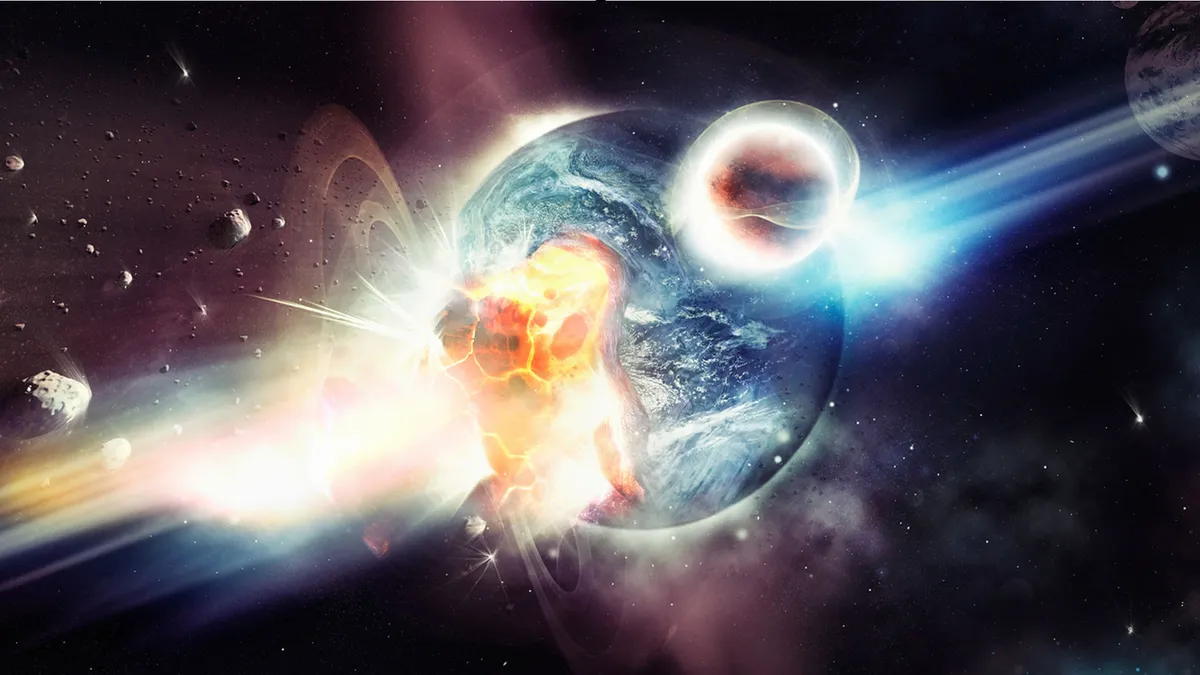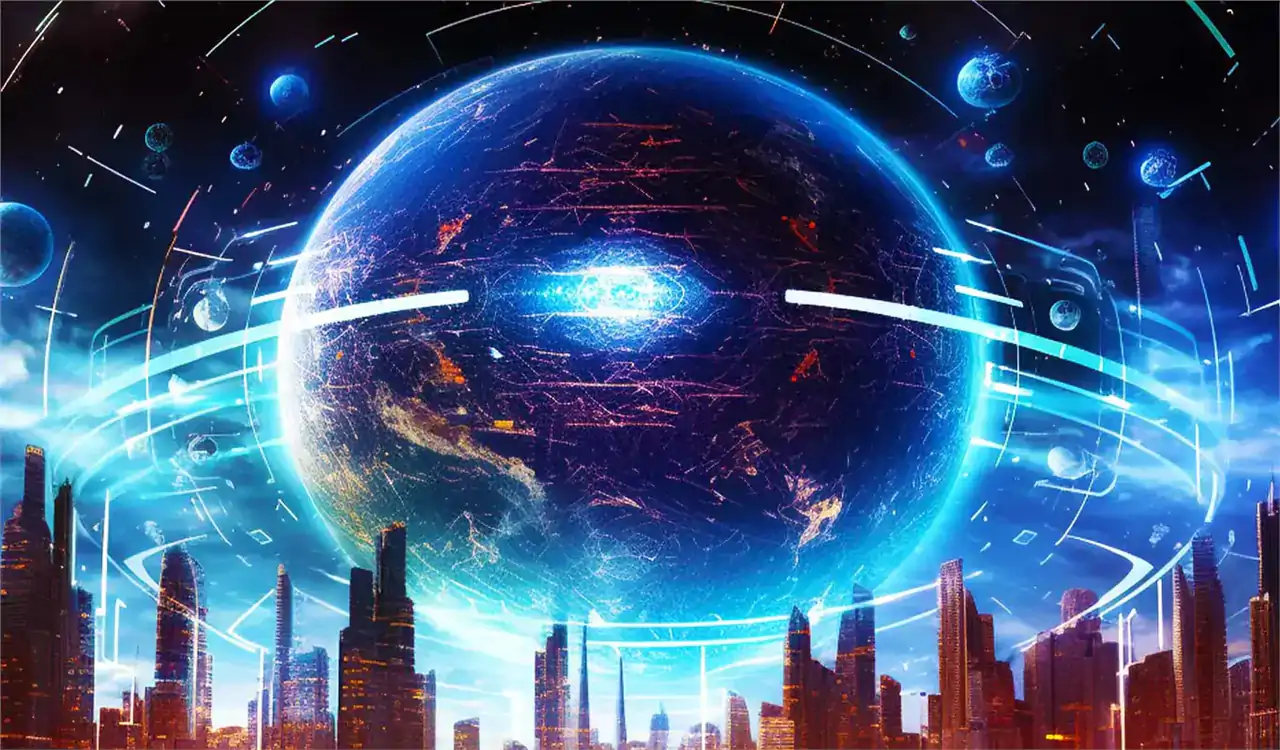Science fiction has always been a source of inspiration for new and imaginative weapons. From laser guns to death stars and beyond, the genre has imagined a vast array of tools that could "destroy entire planets."
So, what exactly would it take to do so? Let's take a look, shall we?
Is it possible to destroy a planet?
But, before we get into the nitty gritty, it might be worth exploring if the premise of destroying a planet is possible in the first place. But, even before we get into that, we must define what we mean by "destroying" a planet.
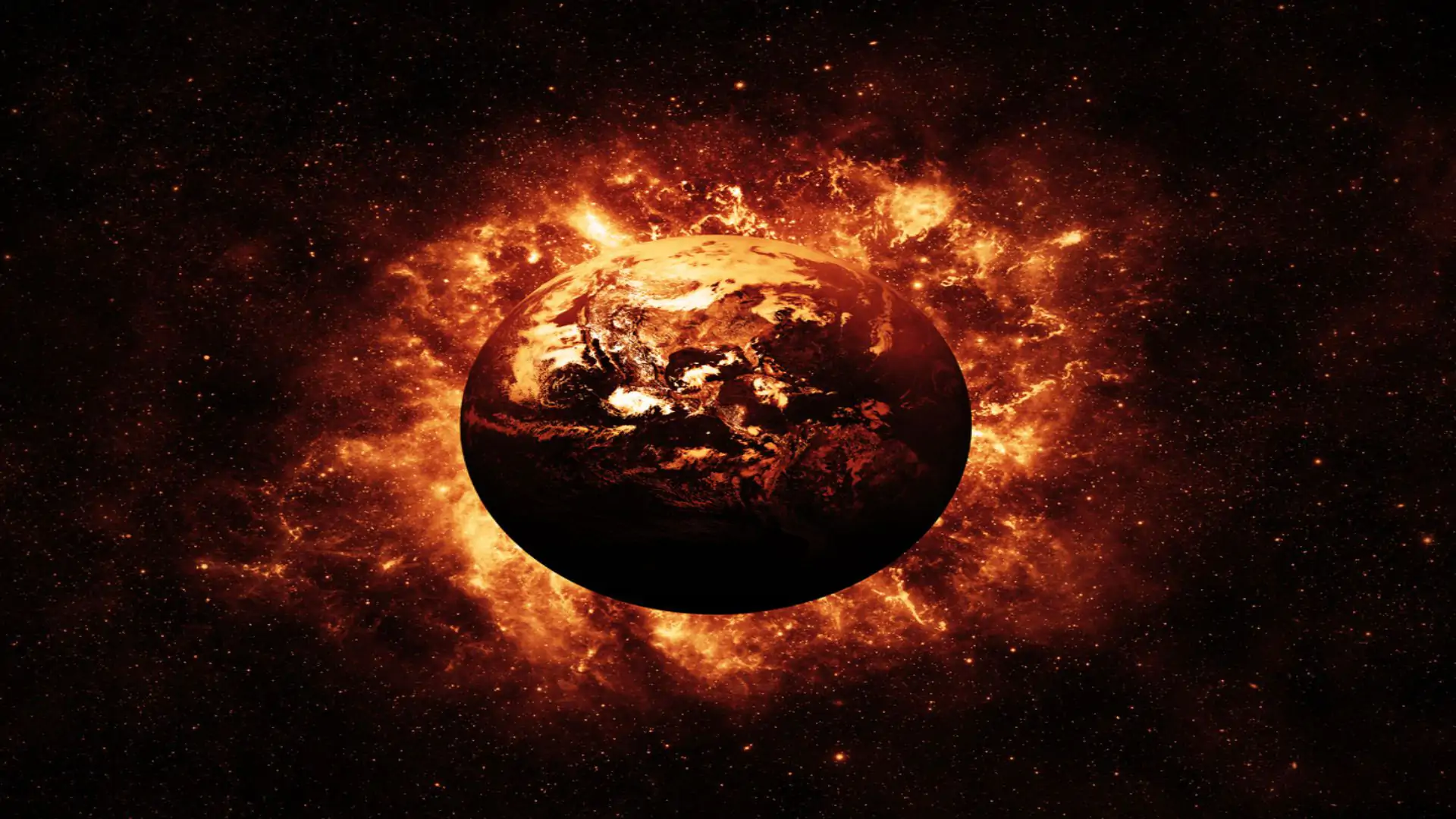
Aphelleon/iStock
We'll assume that most people think this means breaking up the planet or grinding it so much that it can't recombine under gravity into a giant sphere that might or might not be able to support life. You would have to smash the thing to do this, turning it into a massive, giant group of asteroids and space dust.
Some might even go so far as to say that the destruction of a planet only counts if the planet is atomized. In this case, the "original" world would be erased from history entirely and scattered to the cosmic winds. Whichever your definition, neither one is not an easy feat.
So, how could this be achieved (should you want to perform such a terrible act)?
In various science fiction franchises and real science, several ideas have been put forward for destroying a planet, but they all require a huge amount of energy and high-tech tools. Some of the most commonly mentioned methods include:
- Using a large enough nuclear weapon to cause the planet to explode.
- Colliding the planet with another large object, such as another planet or a giant asteroid.
- Using a beam of antimatter or dark matter particles to destabilize the planet's orbit and cause it to collide with another celestial object.
- Using a hypothetical weapon that harnesses the power of a black hole or a neutron star to destroy the planet.
- Using a hypothetical "directed energy weapon" that could vaporize the planet by directing a concentrated energy beam toward it, "death star" style.
- Using some, as yet, unknown "power" to devastate a planet, e.g., akin to some magic or unnatural method.
At least some of that sounds plausible in theory, but it soon becomes clear that our species is nowhere near as technologically or scientifically knowledgeable even to contemplate something like this. After all, all the nuclear weapons our species has ever developed would only make a small dent (relatively speaking) in the Earth or another planet.
But nature has other means. Several natural forces could potentially destroy a planet, including:
- Supernovae: A supernova is a powerful explosion that occurs when a star exhausts its fuel and collapses. The explosion can be so powerful that it can destroy planets in the nearby solar system.
- Gamma-ray bursts: These are extremely intense bursts of energy believed to be caused by the collapse of massive stars or the merging of two neutron stars. They could also potentially destroy planets.
- Collision with another planet or celestial object: A collision with another large celestial object, such as a planet or a comet, could potentially destroy a planet.
- Stellar collision with a black hole: A star or planet colliding with a black hole would be destroyed in most cases.
- A nearby supermassive black hole: If a planet is too close to a supermassive black hole in a galaxy, the planet could be destroyed by the tidal forces of the black hole.
So, pretty enormous amounts of energy, then. How much are we talking about?
Looking at the above natural causes of planet death, the last four are probably, to borrow a phrase, overkill, so let's focus on the first for a moment.
The energy released during a supernova is enormous. A typical supernova releases an amount of energy equivalent to the energy output of an entire galaxy, which is on the order of 10^44 joules. To put that in perspective, that is roughly the same amount of energy as the Sun will produce over its entire 10 billion-year lifetime.
It's also said that a single supernova explosion can outshine an entire galaxy for weeks or even months. When a supernova explodes, it gives off so much energy that it can briefly shine brighter than the whole galaxy.
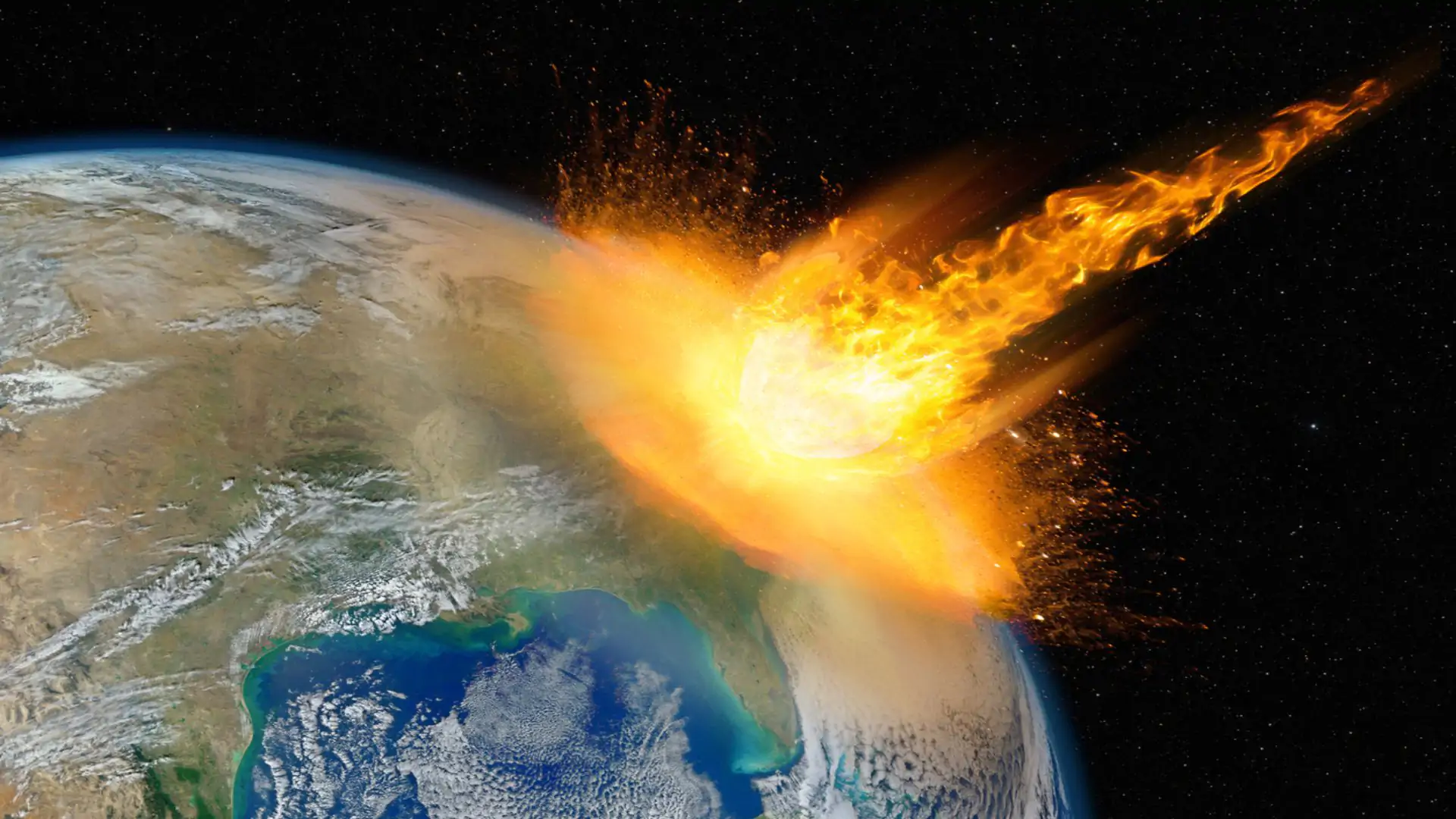
dzika_mrowka/iStock
The explosion can also send out a lot of intense radiation and high-energy particles, which can have a big effect on the space between the stars and cause new stars and planetary systems to form.
But only in its entirety. If we are talking about a single planet, all that energy isn't focused on it alone. We'd only need a fraction of that, as we'll see a little later.
What planets do we know have been or are being destroyed?
We haven't seen a planet being destroyed up close because planets are usually only visible from close up and are very difficult to spot when far away. On the other hand, several exoplanets have been observed to be disappearing or are thought to have vanished in the past.
- Kepler-1649c: is a rocky exoplanet that orbits a red dwarf star every 8 days. The planet is so close to its star that its surface temperature is likely to be around 1,500 degrees Fahrenheit, and it is likely to rapidly lose or have lost its atmosphere.
- HD209458b: is known as the "hot Jupiter" exoplanet, as it is a gas giant that orbits very close to its star. The planet is losing its atmosphere due to its star's intense heat and radiation, and it is believed that the planet will eventually be destroyed.
- Kepler-1520b: Another gas giant that orbits very close to its star, it is losing its atmosphere at an alarming rate and is likely to be destroyed shortly.
- Kepler-36c: is a rocky exoplanet that orbits very close to its star and is likely to lose its atmosphere and be destroyed.
- There are also indications that in some galaxies' centers, planets are being destroyed by the tidal forces of a supermassive black hole. However, these observations are based on indirect evidence and are still under investigation.
It's important to note that these observations are based on our current technology and understanding, and discoveries may change our understanding of these events in the future.
Also, for those who are wondering, the asteroid belt in our solar system likely isn't the leftover remains of a former planet. It is a region of the solar system between Mars and Jupiter where many small, rocky objects orbit the Sun. The asteroids in the belt are believed to be leftover building blocks from the solar system's formation that never coalesced into a full-fledged planet.
What does it take to destroy a planet?
But, all those planets will be destroyed, as far as we know, through entirely natural means. If we were to take a disliking to a planet ourselves, what would it take to blow something that large apart?
Well, it seems it is time to introduce a concept called the gravitational binding energy of an object, like a planet.
Gravitational binding energy is required to separate a system of objects held together by gravity. In other words, it is the amount of energy that must be added to a system to overcome the gravitational forces holding the objects together and separate them.
The mass of the objects, the distance between them, and the strength of the gravitational force all affect the gravitational binding energy of a system. This energy is always negative, meaning it is required to separate the objects and is measured in joules (J).
For something like Earth, the gravitational binding energy we'd need to overcome has been calculated as 20 hours' worth of the Sun's total energy output, or 2.5x1032 Joules.
For reference, according to NASA, the Sun emits an amount of energy equal to 3.8 x 1026 joules every second. In one hour or 3,600 seconds, it produces 1.4 x 1031 joules of energy or 3.8 x 1023 kilowatt-hours.
That is a lot of energy, but if contained in a bomb-like device in the Earth's core, it would likely only be enough to crack Earth into chunks, smearing the bits as a ring of debris orbiting the Sun until it dies too.
But, if we wanted to vaporize the Earth and send its remains into interstellar space, that would require a lot more energy. This would require not only the energy to vaporize the planet but also provide enough energy to allow the remaining bits to overcome the escape velocity and exit its 1 AU orbit of the Sun.
This would require something like 407 days' worth of the Sun's total energy output or 5.7 x 1033 joules. Again, this energy would need to be contained in some bomb device, placed in the core of the Earth, and detonated, preferably from a very safe distance away.
That is a lot of Joules, but what does that work out in terms of TNT? As everyone knows, tonnes of TNT is the only acceptable SI unit for blowing stuff up.
Ok, all well and good, but you didn't click on this article to be given a load of maths. Let's get on to the main event, shall we?
What fictional weapons can destroy a planet?
Here are some of the most notable planet-destroying weapons from various science-fiction franchises, in no particular order.
1. "Two-stage cyclonic torpedoes" from Warhammer 40,000 are pretty nasty
"In the grim darkness of the far future, there is only war," as the famous tagline for this top-rated science fiction wargame franchise says. And, for anyone even remotely familiar with the lore, this is an understatement.
All forces within the universe have devastating weaponry, many capable of destroying a planet without trouble. One of these weapons is the two-stage cyclonic torpedo.
According to the lore, these are Imperial weapons of mass destruction typically launched from a "voidcraft" (a spaceship capable of traveling through "the warp") into a low planetary orbit.
"Cyclonic Torpedo" refers to many weapon types, including the Atmospheric "Incinerator Torpedo." All these weapons can destroy the entire biosphere of the target world, either by starting a thermonuclear reaction that ignites all of the free oxygen in the atmosphere or by using the straightforward method of nuclear-fusion-assisted plasma bombardment.
The end consequence of these weapons is always the same, regardless of the precise cause of the impending mass murder: the destruction of the planet's biosphere, with its atmosphere burning into space and its oceans boiling to vapor, leaving behind the desolate bedrock of a Dead World.
The detonation is typically powerful enough to break a planet's crust and shake its core, and the blast radius is large enough to be visible from space. That's bad enough, but a far more powerful variant exists, the "Two-Stage Cyclonic Torpedo."
These torpedoes have warheads with two stages: a planet's mantle and crust are pierced to reveal its core in the first stage's extraordinarily strong "Melta Charge." Then a modified "Cyclonic Plasma Charge," used in the second stage, destabilizes the planet and, in most circumstances, physically destroys it from the inside out.
The military belonging to the Imperium of Man only employs the "Cyclonic Torpedo" to execute a sanctioned "Exterminatus" action against a planet that has been determined to pose an extinction-level threat to other inhabited areas of the human-settled cosmos.
The Inquisition and the Adeptus Astartes are the only known organizations in the Imperium to have authorized the deployment of cyclonic torpedoes during such an action.
2. The "Planet Killer" ship in Warhammer 40,000 is also not to be trifled with
Sticking with the Warhammer 40,000 Universe, just because we want to, there is another planet-destroying device worthy of note, the so-called "Planet Killer" ship.
According to the lore, also known as Krukal'Righ in the Cthonic dialect of the Black Legion, was Abaddon the Despoiler's flagship during his 12th Black Crusade, also known as the Gothic War, which lasted from 139.M41 to 160.M41.
It is a vast, planet-destroying star cruiser.
The aptly dubbed "Planet Killer," with its massive primary weapon known as the "Armageddon Gun," has the power to destroy entire worlds. The weapon is constructed around a central, directed energy cannon of unimaginable dimensions and unknown technology.
The entire ship is designed around an unfathomably powerful directed energy cannon and is equipped with several long-range lances, weapon batteries, and torpedo launchers. The ship had excellent armor and was shielded by many Void Shield generators; its slow speed appeared to be its sole shortcoming.
3. The "Death Star" is probably the best-known planet-killing fantasy weapon
Unless you've been in a coma for 50 years, you are probably more than familiar with the "Death Star." But, just in case, by some miracle, you've no idea what it is, then we'll offer a brief description.
The "Death Star" is a fictional moon-sized battle station in the Star Wars universe, armed with a super laser capable of destroying entire planets. It is the primary weapon of the "Galactic Empire" and is featured in the original Star Wars trilogy and the "Rogue One" prequel.
The super laser's exact method of destruction is not specified in the movies. Still, it is implied to be a directed energy weapon, likely using intense beams of focused energy to destroy the planet's structure. Star Wars fans are also informed by the canon that "Kyber Crystals" (the same crystals used in lightsabers) provide some integral parts of the laser's engineering.
However, in some Star Wars canon, we are told that a hyper reactor powers it with the output of multiple main sequence stars. That, if true, would give it enough punch to potentially tear a planet apart, as we saw in "Star Wars: Episode IV - A New Hope."
4. "Unicron" from "Transformers: The Movie" actually eats planets for breakfast
Perhaps the most innovative method of rendering a planet non-existent is the mighty "Unicron" from the best Transformers film ever made, the original 1980s animated movie.
The main antagonist in the movie, "Unicron," is a force to be reckoned with. "Unicron" can morph into a massive planet and is an extraordinarily enormous robot with planetary proportions. According to Transformers' lore, "Order" and "Chaos" are said to have been within something called "The One," an extradimensional being, before the beginning of existence. He/it makes "Unicron," an astral creature known for exploring the cosmos, and splits him to make "Primus," "Unicron's" twin.
In the movie and extended books, comic books, and cartoons, he is often depicted as using his immense size and strength to destroy a planet by crushing it or breaking it apart.
He can also open a portal to another dimension and suck the planet inside. Additionally, he has powerful energy weapons capable of destroying entire planets in a single blast. From what is seen of "Unicron" in the "Transformers" universe, he tends to be partial to worlds high in metal, like "Cybertron," so it is unlikely that he'd pay a rocky planet like ours any heed whatsoever.
Whatever the case, he has quite a few options available for him if he takes a disliking to a planet.
5. The "Vogon fleet" in "The Hitchhiker's Guide to the Galaxy" seems to have the art of planet-destroying down to a fine art
According to this seminal science fiction book, a fleet of yellow cruisers called a "Vogon Constructor Fleet" is what the Vogons use to obliterate worlds.
The "Vogons," according to Douglas Adam's "The Hitchhiker's Guide to the Galaxy," are known for their bureaucratic and aggressive behavior, and in the series, they are responsible for the destruction of Earth to make way for a hyperspace bypass.
The ships of the "Vogon Constructor Fleet" are described as "impossibly huge yellow somethings" (the color is a comparison to the bulldozers that destroy Arthur's house) that "looked more like they had been congealed than constructed" and "hung in the air in much the same way that bricks don't"; they are also said to be invisible to radar and able to travel through hyperspace.
Vogons do not entirely operate them; the onboard catering is handled by a race known as the Dentrassis.
It is not entirely clear how these ships work, but given their analogous function as human bulldozers, they likely use some form of planet-scale kinetic impact to get the job done.
6. The "Lexx" is an insect-looking planet killer
In case you are unaware, the Lexx is the main ship in a science fiction television series of the same name that first aired in 1997. The series is set on a giant sentient spaceship called the Lexx, controlled by a group of misfit characters who travel through space in search of adventure.
According to the series' lore, the ship itself was intended to eradicate all planets with human habitation and usher in a new "insect era" of its creators, the Brunnen-G.
Supposedly utilized in the closing stages of "The Great Insect War," it comprises insect and mechanical parts. It lacks the Insect Essence itself while being partially insect-engineered. From our point of view, the ship's main armament is specifically designed to destroy planets wholesale.
The weapon uses a different technology than its predecessor ships, which used an "amplified Black Pack" weapon system. This weapon system, which can destroy any planet, uses The Lexx's ocular parabole (its insect "eyes") to fire a focused horizontal beam of energy.
Other than that, little information is forthcoming on how the weapon can annihilate entire planets.
7. The "Nova bomb" in Andromeda is like using a hammer to crack a nut
In the science fiction series "Andromeda," a potent weapon called a "Nova bomb" is capable of causing the Sun to go supernova, wiping out almost the whole solar system's matter. Instead of a conventional explosive payload, a weapon the size of a 55-gallon drum is put on a missile. Though so we are told, these warheads are hardly ever kept loaded in missile tubes before launching in case of a technical issue that would trigger the Nova Bombs.
A "Nova Bomb" works by destabilizing a star's gravity rather than "blowing it up," as a conventional missile might, to kill a sun. While the continuous fusion reaction exerts a steady outward pressure, the Sun's gravity pushes a significant amount of pressure inward.
By removing the star's natural gravity, the "Nova bomb" upsets its normal equilibrium and triggers a runaway fusion reaction of stellar dimensions. The hydrogen gas undergoing fusion disperses in all directions without gravity, bursting and obliterating everything in its path.
But, according to the lore, they can be used for other things, like destroying black holes. These can be eliminated by using a lot of "Nova bombs." A "White Hole," effectively a little big bang, is created when the collective field collapses the singularity's gravity well. Like the big bang, it scatters a singularity with almost infinite density.
The mass liberated in the "White hole" begins to collapse back together after the effects of the Nova wear off and gravity takes over. Theoretically, this might work on a star massive enough, but there isn't nearly enough matter or gravity for a star to regenerate, thus guaranteeing its extinction.
A star system can also be separated from the slipstream utilizing "Nova bombs." It is unclear exactly how this is accomplished, but a massive tachyon burst and rivers of blue energy connecting planetary masses emerged from the system during this time. Then, the entire system vanishes as the slipstream around the Star System collapses.
The artificial element "Voltarium," utilized to create highly radioactive explosions, is the principal component of Nova bombs.
8. The "Little Doctor" is another innovative way to remove a planet from existence
One of the terrifying planet-destroying weapons in science fiction is the "Little Doctor" from Ender's Game. According to the lore, the International Fleet created and produced the "Molecular Disruption Device," also known as the "Molecular Detachment Device," "M.D. Device," or "Doctor Device," as a play on the acronym.
Two beams were used in the "Molecular Disruption Device," which, when fired, would collide to produce a field in which electrons could not be shared. The field would extend out in a spherical, but the further it spread, the weaker it would become.
The dispersal process would restart if the field came in touch with more molecules, increasing its strength. The only thing left once the field dissipated would be a collection of iron molecules, so we are told.
The weapon works on the principles of "Strong Force Field Dynamics," which, in the series, is a similar technique to that used for interstellar travel. This is, in turn, based on something called the "Egg Drive," a mechanism used to power spacecraft, which the "Formics" (the main antagonists) first discovered. The weapon also used Gravitics or some form of gravity manipulation.
According to the book series, the weapon was developed a few years after the conclusion of the "Second Formic War". "The Fleet" found that the same technology could be used to break anything down into its component atoms after discovering the "Egg Drive" and how they powered lightspeed flight. As a result, they weaponized the technology by developing the "M.D. Device."
To launch an invasion against the Formic home worlds, it was deployed to the Formic solar systems alongside other starships.
9. The "Sun Crusher" from "Star Wars: The Jedi Academy Trilogy" is another weapon capable of destroying planets
According to the expanded Star Wars universe, the "Sun Crusher" was a tiny, nearly indestructible starfighter capable of unleashing carnage that was far greater than anything the "Death Star" could do. The "Sun Crusher" could kill a complete star system by making its target star go supernova, unlike the "Death Star," which destroyed individual planets.
We are told that layered "Quantum-crystalline" armor, a powerful substance that could ultimately withstand even turbo laser bolts, was the secret to its near invincibility.
To destroy a sun, the "Sun Crusher" carried a payload of 11 energy resonance torpedoes as its main armament. Each torpedo is activated when it passes through the resonance torpedo launcher aboard the ship, resembling an oval-shaped plasma discharge. The resonance torpedo then moved near lightspeed toward the system's Sun.
When the torpedo hit the star, it burrowed into its core and released dense energy packets that made the star's core unstable and set off a chain reaction that caused even low-mass stars to go supernova. The star then explodes, tearing itself apart, and the energy and radiation it sends throughout the solar system would wipe out every planet and every living thing in its path.
The "Sun Crusher" might also destroy a whole system in hours. The approaching supernova was unavoidable once it was hurled into the star.
10. The "Vorlon Planet Killer" from "Babylon 5 is aptly named
In the science-fiction series "Babylon 5," "The Vorlon Empire" employed a colossal class of ships known as a planet killers to wipe out entire planets.
These enormous ships, so we are told, were constructed around a laterally bifurcated disc-shaped hull that was between four and five miles large and had the mottled green skin pattern unique to "Vorlon" technology.
With a pair of cupped petal-shaped ports and starboard "wings" that bent forward from the aft section, it appeared that much of the rear part was taken up by a sizable array of gravitic motors. Giant, smooth blisters, low ridges that resemble fins, giant spikes, and sail-like features can all be seen on the dorsal and ventral surfaces.
Two forward-pointing pairs of undulating tentacle-like structures, each flanked by a smaller set and positioned outside the dorsal and ventral hull, make up most of the forward segment. This front structure is considered the planet-killing weapon's focus point and directed emitter.
As the "Second Shadow War" of the series concluded, this signaled the start of a terrible campaign in which the Vorlons rampaged across known space, eradicating all planets.
11. The "Wave Motion Gun" from "Space Battleship Yamato" can destroy stars
The "Wave Motion Gun" is a potent weapon that could obliterate anything up to the size of a star in the Japanese science fiction anime series "Space Battleship Yamato." According to the series lore, the wave motion engine is powered by a sizable apparatus that functions as a high-power capacitor.
The power input is charged up to the critical level of 120% by this "capacitor," at which point the person in charge of the firing mechanism unlocks the last safety lock and discharges the weapon when it is prepared. The "barrel" of the weapon must be long due to the enormous demand for focused force, and in the case of the Yamato, the barrel is the entire ship from the engine to the firing gate.
The crew within the cannon's light range must wear "Anti-Shock/Flash goggles" and tint the window because the cannon's light output is so intense.
According to the lore, there are at least two variations of the "Wave Motion Gun": the concentration type, which is more common, fires a beam straight ahead from the bow, and the dispersal kind, which at a certain point spreads out and damages enemy ships nearby.
However, the gun has a drawback: if it discharges all six bullets at once, the ship it is installed on will be destroyed. Even though you can adjust it, firing all six bullets at once is still dangerous.
The "Wave Motion Gun" can also be installed on more than one side of a spaceship. As an illustration, the two Wave Motion Guns aboard the Andromeda-Class Battleships and their descendant draw their energy from the same core. This enables firepower equal to or greater than the Yamato and the ability to hit a larger surface area with a single shot.
The Iscandarians, a race that spread throughout the "Large" and "Small Magellanic Clouds" before being vanquished and overthrown by the "Gamillas," were the ones who first created the "Wave Motion Gun," which was created from the energy released from the wave motion engine.
And that is your lot for today.
As you can see, developing superweapons capable of destroying planets, or entire solar systems, appear to be quite popular. Whether or not this could ever be done is far beyond our understanding of physics and technology.
However, natural processes on the grand scale of the universe seem to have little trouble with such a feat. Whether or not our species, or other advanced alien species, could ever manage the feat is yet to be seen. However, we are sure, much like the use of nuclear weapons today, such an action would be viewed in a very dim light.
Disclaimer: The views expressed in the content are solely those of the author and do not reflect the views and beliefs of the website or its affiliates.


Archaeologists have discovered Chatelperronian tools at a Neanderthal site in Basque Country, Spain. Joseba Rios-Garaizar says the tools offer insight into the extinction of Neanderthals.
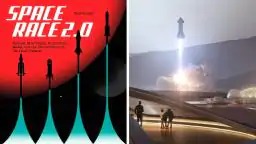
 A new book explores how Musk, Bezos, and China are rewriting the rules on space exploration
A new book explores how Musk, Bezos, and China are rewriting the rules on space exploration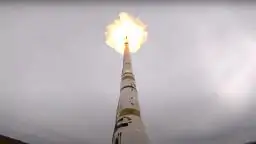
 Space cannon could fire payloads to orbit in 10 minutes at Mach 20
Space cannon could fire payloads to orbit in 10 minutes at Mach 20Tesla tweet case: Elon Musk not guilty of misleading investors
Second spy balloon traced over Latin America, US-China tensions escalate
'Biggest con': Adani suffers $107 billion loss after damning report



 BlocksInform
BlocksInform
